The down imaging and side imaging dilemma troubles many anglers. Yet, there is no wrong choice. Both devices serve to find fish and improve your catch rate. The difference is that down-imaging shows what’s happening directly beneath your boat and side-imaging shows fish on both sides of your boat.
Have you ever used a fish finder?
If not, you must give it a try! Speaking from personal experience, imaging technology is your best ally when you want to increase your catch rate.
As far as fish finders are concerned, you have two options: down-imaging fish finders and side-imaging fish finders. They are two completely different types of sonar that help anglers locate fish in the water.
It is not an easy decision to make. Both types of sonar have advantages and disadvantages. Yet, they have one thing in common: they are highly praised by users worldwide.
If you keep scrolling, you’ll learn everything you need to know about down imaging vs side imaging technology. I will share my knowledge and experience and hopefully enable you to make an informed decision when buying your new fish finder.
Let’s begin!
Down Imaging Sonar Technology
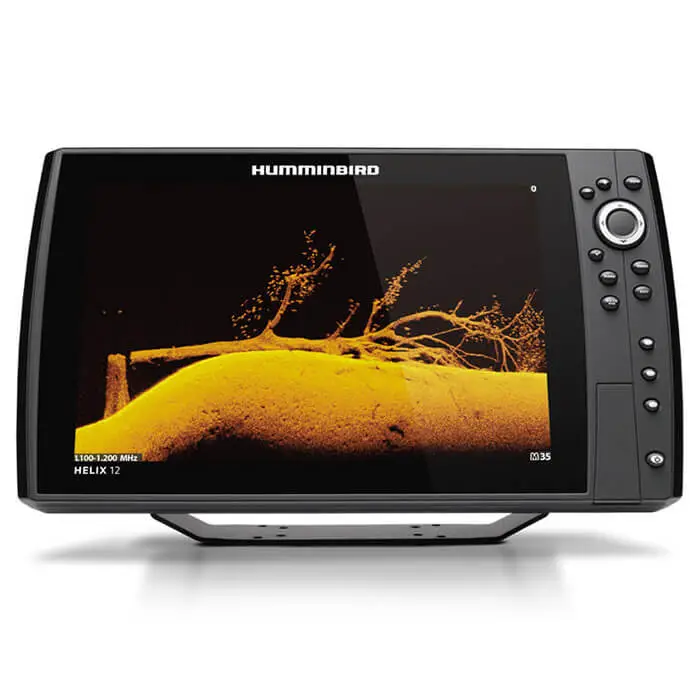
A down-imaging fish finder uses much higher frequencies than traditional 2D sonar. As a result, it can deliver a more detailed image of the terrain underneath your boat and all the fish in it. You can find this type of imaging sonar under many different names, such as DownVU or DSI.
Range
Down-imaging sonar uses a single transducer to scan the bottom and the space directly beneath your boat. It offers a greater range than the cone of standard 2D imaging systems and can send out CHIRP sonar waves up to 300 ft deep, depending on the model you purchase.
Image Quality
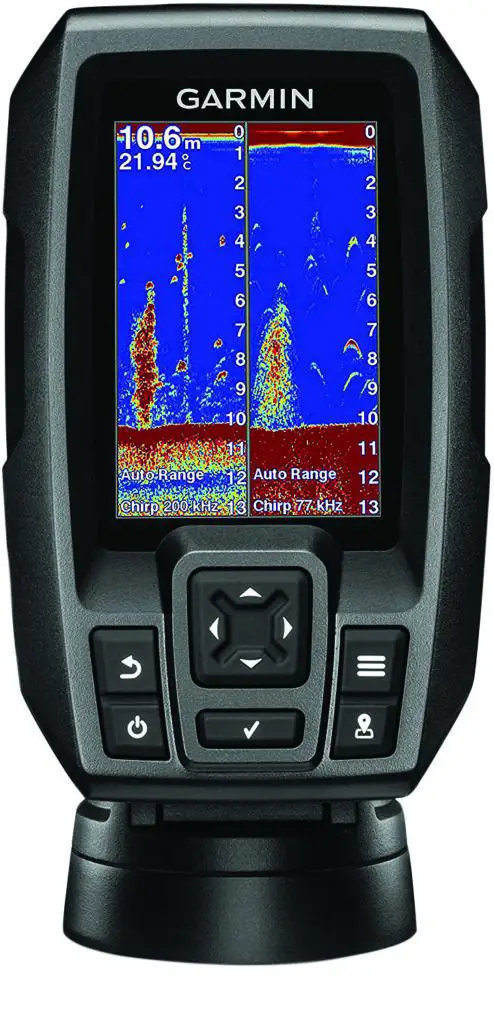
Unlike traditional fish finders that show different red and green colorations on their screen, down imaging sonar produces a dark image. If you are used to interpreting traditional sonar graphs, you might need some time to figure out how to read the new images. You will notice that they are much clearer and more detailed.
So, how does the down imaging device deliver such a detailed picture of the underwater terrain?
The device sends down sonar waves that hit the objects or fish that stand in their way and reflects their image back to the device. You get a clear picture of everything below you, making it much easier for you to fish, especially in deep water.
In short, down imaging scanners enable you to determine:
- Precise depth and any depth changes
- Position of all fish and underwater structures
- Bottom contours
In my experience, down imaging systems not only help detect fish but also enable you to monitor your bait jig. Hence, when you are bait fishing in deeper water, a down-imaging can be a real game changer.
Many down-imaging fish finders use standard sonar with a single transducer. As a result, they produce images of lower quality in comparison to those made by down-imaging devices that send out multiple low and high-frequency waves simultaneously. Consider that when shopping for a new down scanning device.
If you want to learn how to interpret down-imaging sonar pictures, watch the video below:
Additional Features
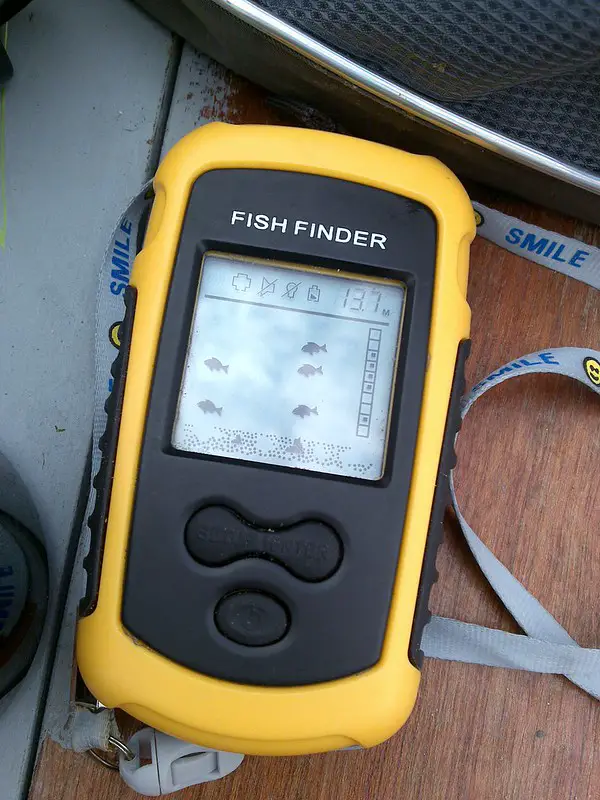
Some models of down-imaging fish-finding devices allow you to observe the chart at the same time as the sonar images. It enables you to mark every structure you see on the map and use it for future reference.
Pros Of Down Imaging Sonar
- Excellent for fishing in deep waters and bottom fishing as it enables you to determine the best depth to throw your bait in without wasting any time.
- Gives you a vertical point of view, enabling you to determine the exact depth and identify hot spots.
- Works at high speed and covers a lot of water in a short time, making this technology ideal for trolling for fast fish species such as marlin.
- More affordable than a side imaging device and thus more suitable for low-budget anglers.
Cons Of Down Imaging Sonar
- It limits your view to the area underneath your boat and does not cover the 600ft of horizontal space that side imaging sonar does. You can try to cover this area by moving your boat faster, but it will take much more time.
Side Imaging Sonar Technology
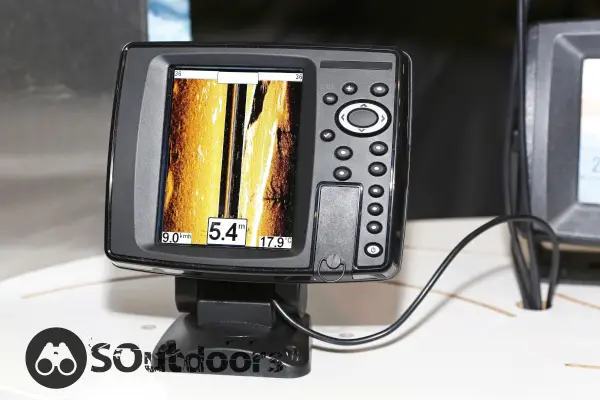
Even though down imaging vs side imaging is a common dilemma, down and side imaging have many things in common. A side imaging finder operates in a similar way as a down imaging one, except that it delivers pictures of the area on the sides of your vessel – the so-called horizontal plane.
The technology is more or less the same as that of a down imaging device. The high-frequency sonar waves travel sideways from your boat and hit all objects that stand in their way, constructing their image that is then sent back to you. Besides, most side imaging devices have a down scanning option, as well.
Range
Side imaging fish finders offer an astonishing range of up to 1 km or 300 ft, depending on the model you buy. Some side imaging sonars have more than one transducer and can send out several beams of different frequencies at once, creating a sonar net around your boat.
As a result, side imaging enables you to cruise down the river, lake, or sea and cover a lot of water in search of the trophy catch. It is ideal for trolling anglers and fishing in shallow water.
Image Quality
As a rule, side imaging sonar delivers highly-detailed images. In many cases, this type of sonar offers higher-frequency waves than its down-imaging counterpart. Consequently, it produces images of better quality, as well. It is one of the reasons that side imaging devices are often more expensive.
The following video offers a few side imaging tricks that can help you spot the fish more easily:
Additional Features
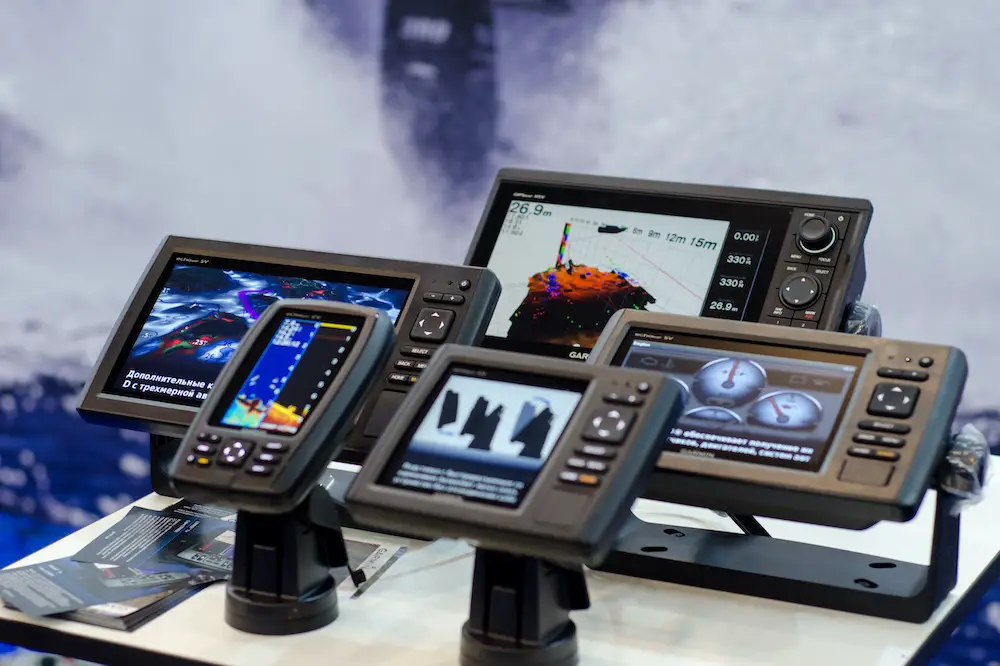
Side imaging sonars are usually very customizable and the choice of features depends on what you need and how much money you are willing to spend. For example, there are different filtering and zooming choices, wide palette options, and GPS combos.
Pros Of Side Imaging Sonar
- Has a greater proportional range in comparison to down imaging sonar and thus allows you to cover way more water in less time. Instead of showing you only what is directly under you, it covers the water up to 300ft on both the left and right sides of your vessel.
- Most side imaging fish finders offer down imaging scans, too, enabling you to choose which imaging models you want to use.
- Works in shallow water and shows you almost everything hiding underwater, even in the shallowest bay or river.
- Delivers a high-quality picture due to utilizing high-frequency waves that can catch many details.
Cons Of Side Imaging Sonar
- Unable to display clear images of underwater objects when trolling at high speed. Hence, it is useless when trying to catch fast fish species.
- Unless it offers down imaging, it cannot show you what is going on directly under your boat.
- Unable to show you what is on the bottom if the water is too deep.
- Far more expensive than down-imaging fish finders.
- Requires a boat driver to drive in a straight line, or pictures will not be clear.
Down Imaging VS. Side Imaging: Which Imaging Technology Should You Choose?
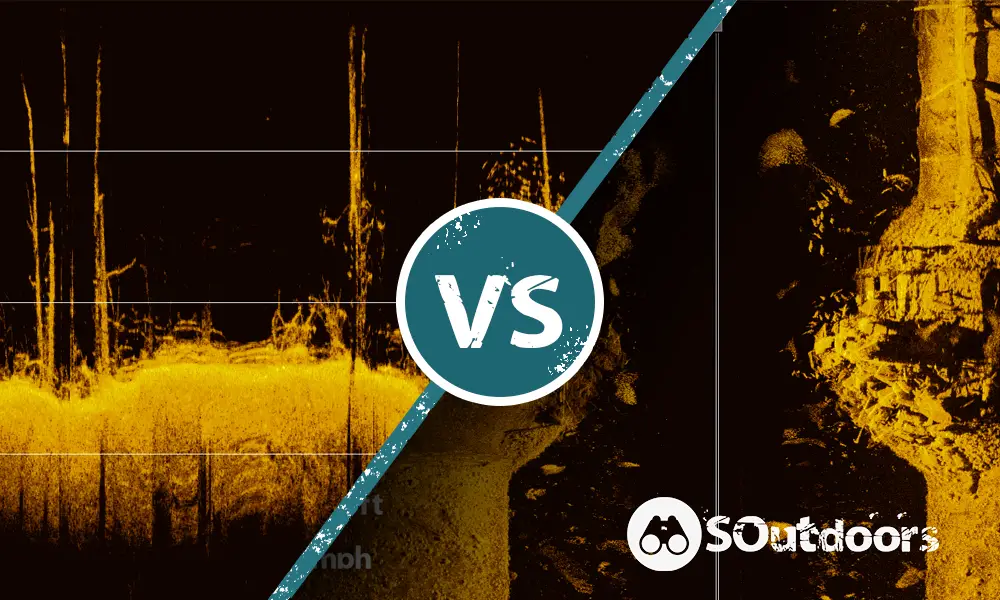
Down and side imaging fish-finding devices are both highly-practical and helpful when hoping to catch more fish. I cannot say that one is better than the other, as they are both advantageous in certain fishing situations.
Hence, when deciding which one to purchase, consider your fishing style, the environment you plan to fish in, and the fish species you are targeting. Sometimes the choice is as clear as a summer’s day.
Fishing In Shallow/Deep Water
A side imaging fish finder is a clear winner for fishing shallow rivers or bays. However, in deep water, side sonar beams cannot show you the vertical images or the picture of the bottom terrain.
Winner: The down-imaging fish finder is a winner when it comes to deep fishing.
Watch the video that follows to learn how to use a fish finder to locate a shallow-water bass:
Fishing At High Speed
In order to get a clear picture from a side imaging fish finder, your boat must cruise at a low speed of under 5 knots. If you need to chase after fast fish species, side imaging technology is more or less useless.
Winner: A down-imaging fish tracker is a clear winner in this category.
Cost
Choosing a sonar unit often depends on an angler’s budget. If you can benefit from either of these two imaging technologies and want to save some money, opt for the cheaper one. Typically, side imaging sonars are the more expensive of the two.
Winner: Down-imaging wins again.
FAQs
Can you see fish on down imaging?
You can see fish on down imaging as it sends out a high-frequency, razor-thin beam and delivers picture-like images of underwater objects, vegetation, and fish. It will show you everything happening directly under your vessel.
Is down imaging worth it?
Down imaging is worth it, especially if you want to fish in deep water or at a higher speed. It will deliver a clear vertical picture of everything happening underneath your boat and allow you to determine the exact depth and position of underwater objects and fish.
What fish finder has down imaging and side imaging?
Many fish finders have down imaging and side imaging. In fact, most side imaging sonars come with a down scanning option as well. Numerous manufacturers such as Humminbird or Garmin have released models that offer both imaging technologies providing the best of both worlds.
Can you see your lure on down imaging?
You can see your lure on down imaging when you are fishing vertically. The lure also needs to be within the sonar cone of the transducer, which is rather narrow. Hence, ensure you lower your lure or jig as close as possible to the transducer.
Time To Make Your Choice
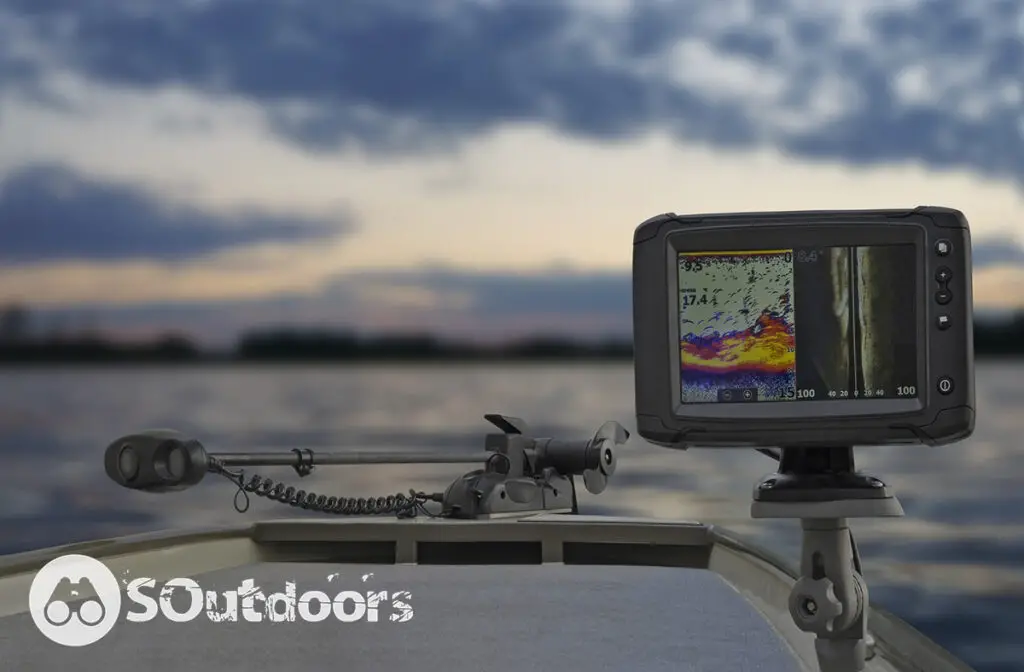
Many anglers share the dilemma of down imaging vs side imaging, but you can resolve it right here and now.
You should use the down-imaging fish finder if…
- You want to be able to troll at a speed higher than 5 knots, chasing fast fish species such as marlin, tuna, or wahoo.
- You prefer bottom fishing or deep water fishing in water over 50 feet deep.
- You are on a tight budget and cannot afford the pricier side imaging fish finder – down imaging is always better than no imaging!
You should use a side imaging fish finder if…
- You are fishing in shallow water or want to be able to cover a lot of water in a short time.
- You want to enjoy the benefits of down imaging and side imaging in one unit since most side imaging fish finders incorporate down imaging, too.
- You are slow cruising on your kayak or boat in search of fish.
What is the bottom line?
In my experience, the choice between down vs side imaging comes down to your budget. If you can afford it, you should always buy a unit that offers both down imaging and side imaging. That would enable you to enjoy both deep and shallow-water fishing.
Thanks for your patience. If you have additional questions, leave a comment, and I’ll get back to you. Please share this with your fellow anglers, too. You might help them pick the best fish finder and improve their fishing experience.
